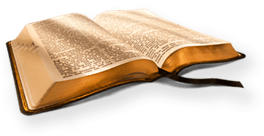King James Bible
King James Version (KJV)


"An architectural term found only in Ezek. 40:16, 21, 22, 26, 29." There is no absolute proof that the Israelites employed arches in their buildings. The arch was employed in the building of the "pyramids of Egypt. The oldest existing arch is at Thebes, and" bears the date B.C. 1350. There are also still found the remains "of an arch, known as Robinson's Arch, of the bridge connecting" Zion and Moriah. (See TYROPOEON [25]VALLEY.) "(1Thess. 4:16; Jude 1:9), the prince of the angels." "Ruler of the people, son of Herod the Great, by Malthace, a" Samaritan woman. He was educated along with his brother Antipas at Rome. He inherited from his father a third part of his "kingdom viz., Idumea, Judea, and Samaria, and hence is called" king (Matt. 2:22). It was for fear of him that Joseph and Mary turned aside on their way back from Egypt. Till a few days "before his death Herod had named Antipas as his successor, but" in his last moments he named Archelaus. A shooter with the bow (1 Chr. 10:3). This art was of high antiquity (Gen. 21:20; 27:3). Saul was wounded by the Philistine "archers (1 Sam. 31:3). The phrase "breaking the bow" (Hos. 1:5;" "Jer. 49:35) is equivalent to taking away one's power, while" strengthening the bow is a symbol of its increase (Gen. 49:24). The Persian archers were famous among the ancients (Isa. "13:18; Jer. 49:35; 50:9, 14, 29, 42. (See [26]BOW)." One of the nations planted by the Assyrians in Samaria (Ezra 4:9); the men of Erech. "A city on the boundary of Ephraim and Benjamin (Josh. 16:2)," between Bethel and Beth-horon the nether. "Master of the horse, a "fellow-soldier" of Paul's (Philemon" "1:2), whom he exhorts to renewed activity (Col. 4:17). He was a" "member of Philemon's family, probably his son." "The usual designation of Hushai (2 Sam. 15:32; 17:5, 14; 1 Chr." "27:33), who was a native of Archi. He was "the king's friend"," "i.e., he held office under David similar to that of our modern" privy councillor.